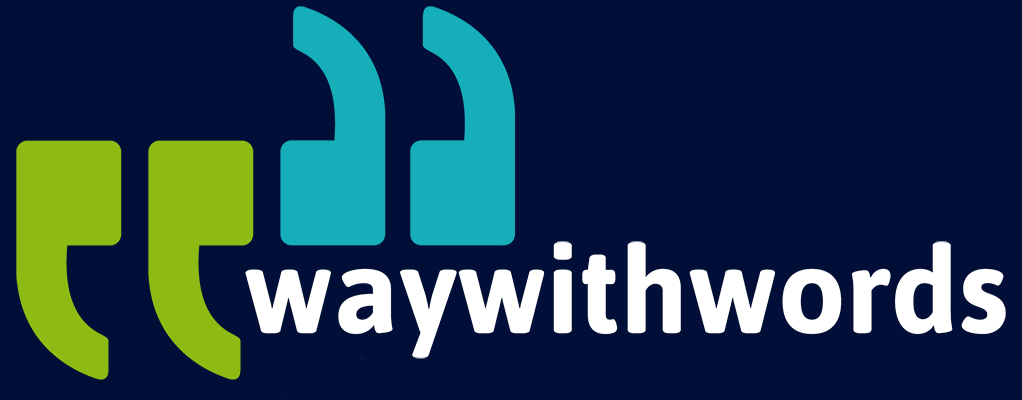Enhancing Live Streams with Captions: Key Benefits
Why Captions Are Transforming Live Streaming
As live streaming becomes a central format for communication, education, and entertainment, ensuring your message reaches everyone is more than just a technical priority—it’s a responsibility. Live streaming captions are no longer a niche feature. They’ve become essential for expanding your audience, meeting accessibility standards, and maintaining engagement during real-time broadcasts. Whether you’re hosting a corporate webinar, broadcasting a product launch, or running a digital lecture, captions for live events help create more inclusive and successful experiences.
Captions are not simply about supporting those who are d/Deaf or hard of hearing—they also benefit non-native speakers, users watching in noisy or silent environments, and those with cognitive processing differences. When implemented effectively, captions contribute to both audience reach and user satisfaction, and they can even enhance content discoverability via search.
As more organisations and professionals explore real-time captioning solutions and look at choosing a captioning service for this purpose, common questions often include:
- What tools and platforms can I use to add captions for live events in real time?
- Do captions for live streaming events help increase viewer retention or engagement?
- Are there legal or compliance requirements for live stream accessibility?
This short guide explores the many advantages of using live streaming captions, from the practical to the strategic. We’ll discuss the latest tools, provide examples of successful captioned events, and outline best practices for professionals in sectors such as education, corporate training, media, and live event production.
Live Streaming Guidelines & Best Practices
1. Improving Accessibility with Live Streaming Captions
Accessibility is one of the most immediate and important benefits of using live streaming captions. Live stream accessibility ensures that your content can be followed by those who are d/Deaf or hard of hearing. In the UK alone, over 11 million people live with some form of hearing loss, according to Action on Hearing Loss. Captions provide a vital way to follow dialogue and important auditory cues during a live event.
Captions for live events also support individuals with auditory processing disorders, non-native language speakers, and neurodiverse individuals who may benefit from a visual representation of spoken content. By making accessibility a standard component of your event strategy, you demonstrate inclusion and social responsibility.
In many regions, including the UK, EU, and North America, there are legal requirements for making digital content accessible. This includes the Equality Act 2010, which states that service providers must take reasonable steps to ensure disabled users are not disadvantaged. Failure to provide live stream accessibility may not only exclude viewers but could potentially expose organisations to legal scrutiny.
Offering accessible content is not just about compliance; it’s about broadening your reach. By incorporating live streaming captions, you can immediately enhance your content’s appeal and usability to a wider demographic.

2. Boosting Audience Engagement and Retention
Engagement is often measured by how long users stay on your live stream and whether they return for future content. Captions for live events can dramatically increase viewer retention. A study by Facebook found that videos with captions had a 12% higher view time on average. Another survey from 3PlayMedia showed that 80% of people were more likely to watch a video in full when captions were available.
Captions keep viewers focused. In live environments where people might tune in from noisy cafes, offices, or public transport, having live streaming captions makes it easier to follow along even without sound.
They also help clarify complex discussions. In educational webinars or technical presentations, for instance, viewers may grasp terminology better when they can read along. Captions act as a visual anchor, helping audiences stay connected to your message.
Engagement is also tied to comprehension. Viewers who understand your content fully are more likely to interact, share, or return to future broadcasts. That’s a direct return on your investment in live stream accessibility.
3. Supporting Multilingual and Non-Native Audiences
One of the biggest advantages of live streaming captions is the ability to support viewers who are non-native speakers. Real-time captions, especially when combined with multilingual support tools, can help your message cross borders.
Platforms such as YouTube Live and Zoom allow for automated or human-generated captions, sometimes with translation features. This can be particularly useful for international conferences, cross-border corporate meetings, and educational content delivered to global students.
According to a report by the British Council, English is spoken by approximately 1.5 billion people globally, but only around 400 million are native speakers. That leaves a vast audience who may prefer or need text support when engaging with spoken English.
Using captions in multiple languages—or at least in your stream’s primary language—can open up your event to significantly more viewers, increasing inclusivity and global participation.
4. Enhancing Learning Outcomes for Educational Streams
In education, retention and comprehension are key. Captions for live events in academic settings have been shown to improve both. Research conducted by Oregon State University found that students who used captions in their lectures performed better in assessments and retained more information.
Captions help break down complex material into digestible parts. They’re especially useful in scientific, legal, or technical fields where terminology may be difficult to follow audibly. Learners can pause and reread captions or take notes more effectively.
In a survey by EDUCAUSE, 98.6% of students said captions were helpful in understanding course material, and over 70% said they use them even when they don’t have hearing difficulties.
Educators and corporate trainers can use live streaming captions to make sessions more engaging, reduce misunderstanding, and improve knowledge transfer. This is particularly helpful in hybrid or remote learning environments.
5. Tools and Software for Adding Real-Time Captions
Implementing captions for live events doesn’t require complex infrastructure. A variety of tools—both automated and human-supported—make it easy to integrate real-time captions.
Some popular tools include:
- YouTube Live Auto Captions
- Zoom Live Transcription
- Microsoft Teams Captions
- Otter.ai
- Way With Words Captioning Services
Each offers different levels of accuracy, customisation, and cost. For professional events, it’s often worth using a human-powered solution to ensure real-time accuracy, especially where technical terminology or proper names are involved.
Choosing the right captioning software also depends on the platform you’re using for your stream. Some tools integrate directly with OBS or Wirecast, while others function as third-party caption delivery services that insert captions into the video feed.
6. Legal Compliance and Risk Management
Incorporating live stream accessibility features like captions is no longer optional in many industries. Legal regulations such as the Equality Act 2010 in the UK, ADA compliance in the US, and WCAG guidelines globally are pushing organisations to ensure digital equality.
Failure to comply with these laws can lead to legal action, reputational damage, and fines. For example, in 2020, Harvard University settled a lawsuit over failing to provide accessible video content, which included live event coverage.
Adding captions for live events shows proactive commitment to compliance. For corporate trainers and HR professionals, ensuring that all internal training and communication content is accessible may also prevent employee disputes and strengthen inclusion policies.

7. Marketing and SEO Benefits
While captions during live streams are mainly for accessibility and comprehension, they can also support SEO efforts. Search engines cannot watch videos, but they can index text. Captions help ensure that your spoken content becomes discoverable.
After your live event concludes, the captions can be repurposed for searchable transcripts, highlight reels, and social media snippets. This improves discoverability and gives your content a longer life.
Marketers have found that live streams with captions often generate higher engagement rates. This is due to increased watch times and shares. Captions also support repurposing content across different formats, including blogs, newsletters, and training documents.
8. Case Studies: Success Stories with Live Stream Captioning
Several organisations have seen measurable success from implementing live streaming captions:
- TEDx Events: TED consistently captions its live events, allowing global access to ideas shared on stage. Viewership statistics show that captioned videos receive significantly more shares and views.
- The Royal Society of Medicine: Their educational webinars now include live captions. This has led to an increase in international attendance and positive feedback on accessibility.
- Corporate Example – Adobe Max Conference: Adobe incorporated real-time captions during its product launch live streams. Post-event surveys showed a 30% rise in viewer satisfaction among attendees who used the captions.
These real-world examples show that captioning is not just a feature—it’s a strategic advantage.
9. Best Practices for Captioning Live Streams
To make the most of captions, certain best practices can improve clarity, accuracy, and viewer experience:
- Use a human captioner or a hybrid model for high-accuracy streams.
- Ensure contrast and readability with font size, colour, and placement.
- Avoid jargon or speak clearly for better ASR results.
- Include speaker identification if multiple speakers are involved.
- Test the captioning solution during rehearsals or dry runs.
Following these practices helps maintain a professional and viewer-friendly standard, reducing confusion or disengagement during your broadcast.
10. Preparing Your Team and Workflow for Captions
Adding captions to your stream involves some planning. Event organisers and content creators should designate a point person for managing accessibility. Brief your captioning provider in advance with:
- Speaker names
- Technical vocabulary
- Event flow or timing

Doing so helps maintain continuity and reduces errors. Always run a pre-event test to ensure captions sync correctly and are legible across all devices.
Incorporating captioning as part of your production workflow signals a mature approach to content delivery. It saves time in post-production and enhances the live experience.
Key Tips: Making Captions Work for Your Live Streams
- Plan in advance: Book your captioning provider early, especially for major events.
- Choose the right tools: Match your platform with a captioning service that integrates smoothly.
- Test everything: Run caption checks as part of your rehearsal.
- Consider your audience: Adapt language and caption style based on viewer needs.
- Repurpose your captions: Use them later for SEO, social posts, or transcripts.
Adding captions to live streaming events is one of the most effective ways to increase engagement, support accessibility, and show commitment to inclusivity. Whether you’re educating, marketing, or entertaining, captions help bridge gaps and enhance your message.
Throughout this short guide, we’ve covered the benefits of live streaming captions, how they support engagement and comprehension, the tools available for captioning live events, and the legal and strategic reasons for adopting them. From improving learning outcomes to reaching a global audience, the advantages are clear.
If you’re an event organiser, educator, or media professional, consider making live stream accessibility part of your regular content strategy. The return on effort is meaningful—not just for your audience, but for your reputation and impact.
Further Captioning Resources
Further Resources: Live Streaming – Wikipedia
Featured Captioning Solution: Way With Words Captioning Services
